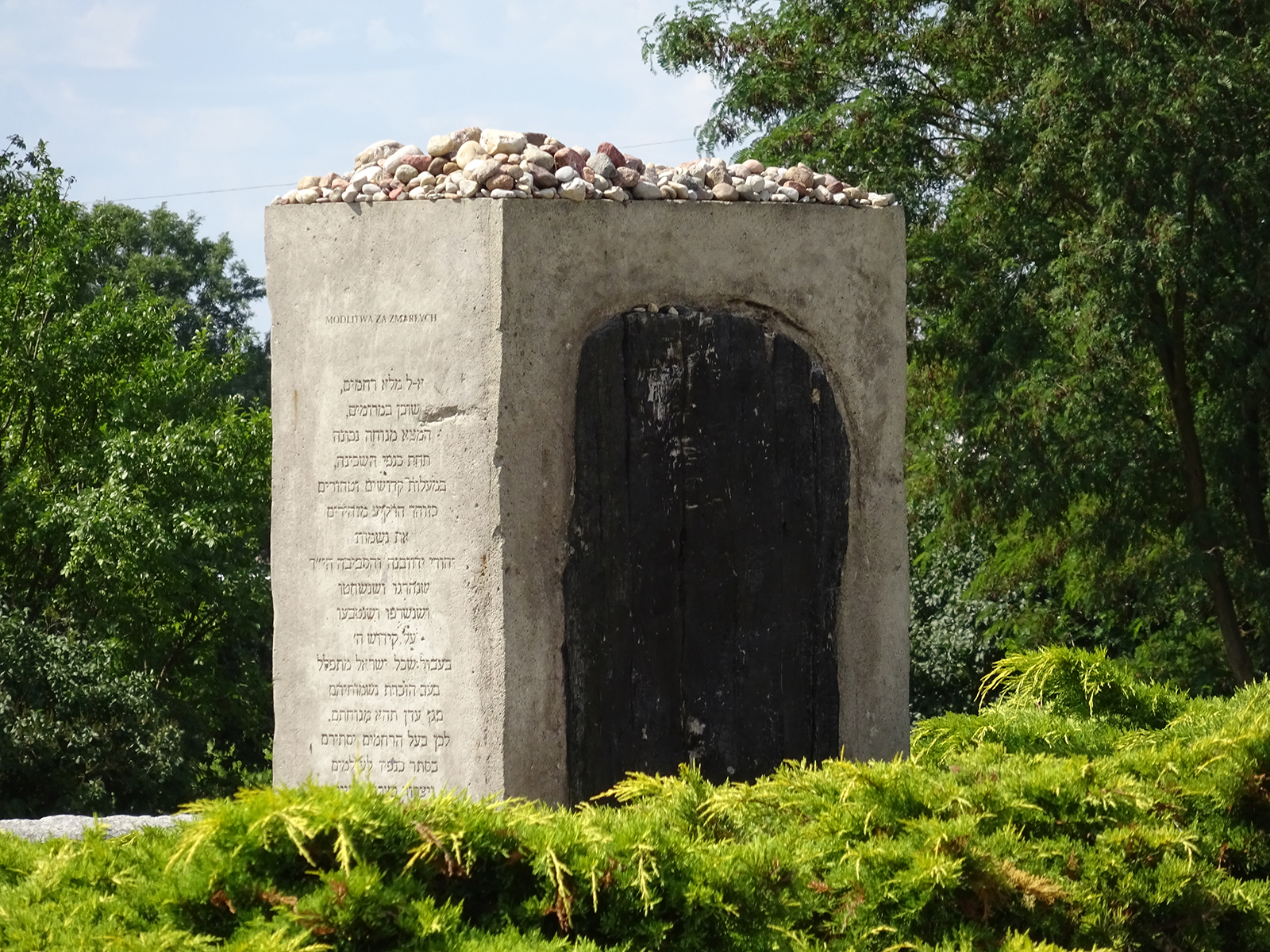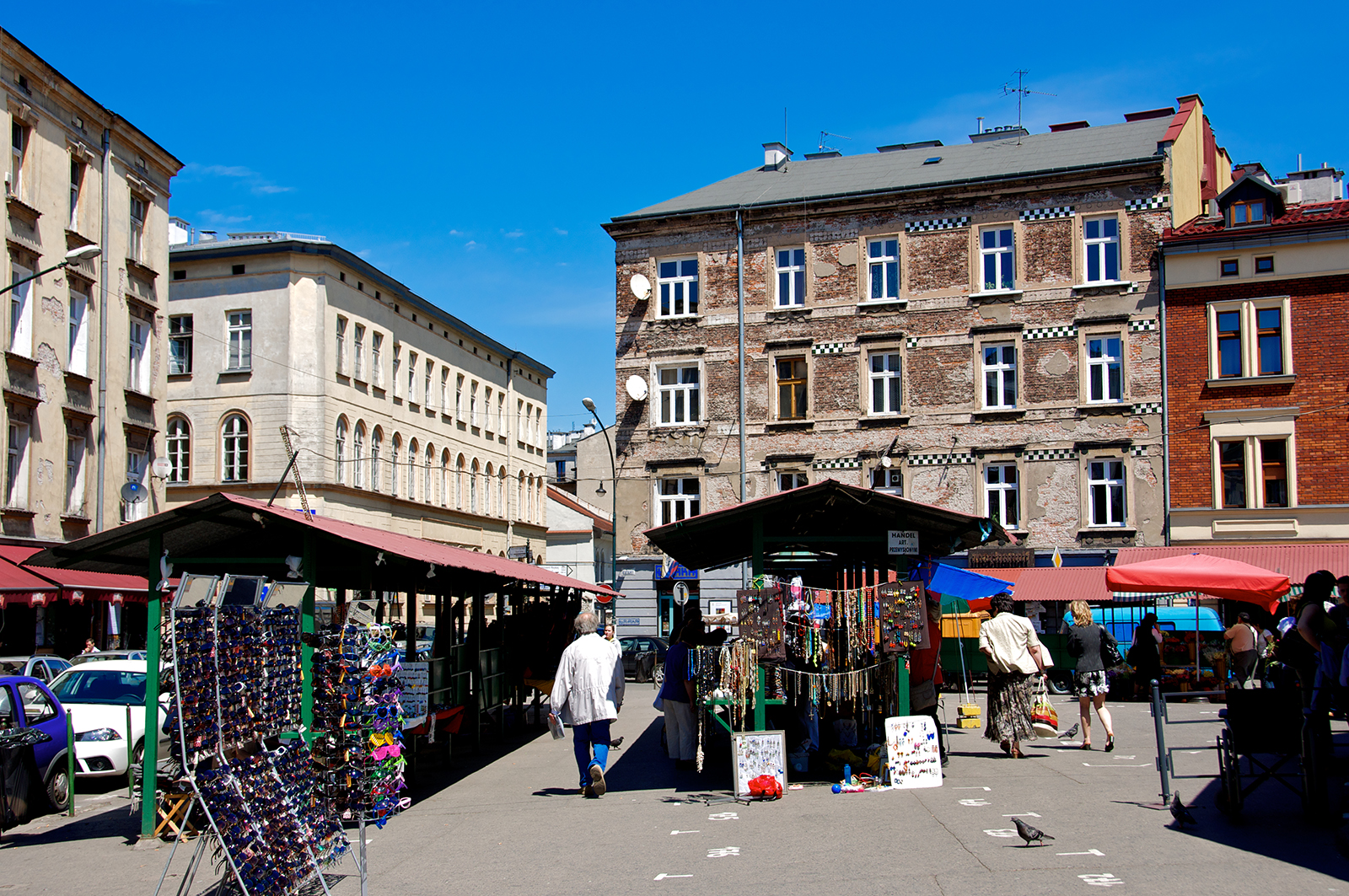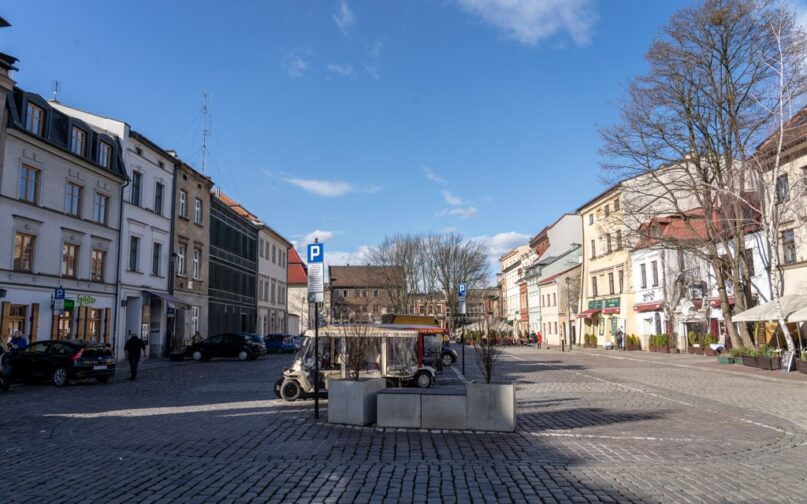(RNS) — I had heard they had been banned. I had heard they were no longer being produced.
And yet, there they were — right in front of me on a shelf, in a stall in Krakow — in the largest medieval market square in Europe.
I am referring to the “Lucky Jew” figurine — a statue of a bearded Jew, in traditional garb, holding a bag of money. Jewish kitsch.
No, I am not kidding. You can buy one of those, in a variety of sizes, in any number of places in Poland. Apparently, authorities tried banning the sale of them, but they simply wound up being too popular.
What do they signify?
- For the Poles who love them, they serve as talismans. They hang in homes and sit by cash registers in shops and restaurants across the country. Own one, and you, too, will become wealthy.
- For others, the figurines symbolize mourning for Polish Jews who died during the Shoah. In sobering fact, Jewish figurines outnumber real, in-the-flesh, living Jews in Poland.
- For others (including me), the figurines are antisemitic.
Welcome to Poland and its Jews. As Facebook would put it, the relationship is complicated.
You cannot tell the story of Poland without talking about the Jews, as you cannot tell the story of European Jewry and Judaism without telling the story of Poland. That is the essential truth that grabbed me recently during my five-day sojourn in that beautiful, proud and tortured land.
A sweet legend about how the Jews got to Poland: In the 1100s, the Crusaders had devastated the Jewish communities of the Rhineland. The Polish king welcomed Jewish refugees (he had his own economic reasons). Birds flying overhead sang to the Jews: Po-lin. You can lodge here. And so it was — a lodging, a sojourning that lasted for more than a thousand years.
For centuries, Jews in Poland were under direct royal authority. They were able to establish themselves as bankers, merchants and royal administrators.
By 1921, Poland was home to almost 3 million Jews. That was almost 11% of the population. It was the largest Jewish community in Europe, and in population it was second only to the American Jewish community. As it turns out, a rather large number of American Jews can trace their ancestry back to Poland/Ukraine — especially Ukraine, which encompassed the Pale of Settlement. This was the heartland of Ashkenazic Jewry.
In the centuries of Polish Jewish sojourning, there were good years, even beautiful ones. But, there were also ugly, troublesome and tragic times.
Which brings us to today, to Yom Ha Shoah — the commemoration of the Holocaust and the anniversary of the Warsaw Ghetto uprising.
As Timothy Snyder makes clear in his seminal book “Bloodlands: Europe Between Hitler and Stalin,” Hitler and Stalin conspired to destroy Poland. That was why the Nazis located concentration camps there — Bełżec, Sobibór, Treblinka, Majdanek, Chełmno, and, of course, Auschwitz. Of the 3 1/2 million Polish Jews, more than 3 million perished in gas chambers and execution fields.
And the Poles? Most were silent and passive. Some perpetrated violence. In at least a dozen villages, Poles carried out anti-Jewish pogroms. The largest happened on July 10, 1941, in the town of Jedwabne. Poles taunted Jews, lynched Jews and finally forced several hundred Jews into a barn and set fire to it.
And yet, there has also been teshuva for that horrific crime. In May 2001, Polish bishops came together in the Warsaw Cathedral to beg God’s forgiveness for what happened at Jedwabne. Then-President Aleksander Kwaśniewski said: “We are here to carry out a collective examination of conscience. We pay homage to the victims and we say: Never again.”

Memorial in Jedwabne, Poland, for the 1941 pogrom. Photo by Sylwester Górski/Wikipedia/Creative Commons
In the words of Waldemar Kuczynski, a Polish economist and journalist:
A fragment of the Polish people that burned a fragment of the Jewish people. This deed will continue to incriminate us … And so we cannot cast off and remove from our conscience that burning barn, that screaming that could be heard two kilometers away.
After the war, the violence continued — most notoriously at Kielce, where on July 4, 1946, Poles killed at least 40 Jews who had returned to their village.
And yet, we must balance this grim history with yet another history — that of Poles who helped Jews.
Yad Vashem recognizes no fewer than 6,620 Poles as Righteous Among the Nations. Poland provided the largest number of Righteous Among the Nations. A quarter of all those honored at Yad Vashem are Poles.
Like I said: relationship — complicated.
Is it a form of teshuvah that today, Poles are fascinated by Jews, the Jewish people, Jewish culture and the Jewish religion?
Let us take note:
- Non-Jewish Poles are getting master’s degrees in Jewish history, and studying Hebrew, and working as loyal employees in Jewish institutions.
- Three hundred people are studying Hebrew at the JCC in Krakow — 275 of whom are not Jewish.
- The largest Jewish cultural festival in perhaps the entire world — the Jewish Culture Festival in Krakow — overwhelmingly appeals to non-Jews.
Relationship — complicated. It’s like one of those Russian dolls that are also available for purchase in Polish stores. Unpack the doll, and there is another doll inside it. There are always stories within stories.
Drop everything and get a copy of Mikołaj Grynberg’s collection of short vignettes, “I’d Like to Say Sorry, but There’s No One to Say Sorry To.”
These are small oral history testimonies, soliloquies: from Jews, and those who might be Jews, and those who recently discovered they were Jews, and successful businesspeople who resent being mistaken for Jews, and those who love the Jews, and those who respect the Jews (like the teenage boy who collects and buries bone fragments from the area of the Warsaw Ghetto uprising), and those who do not like the Jews, who persecuted Jews — and yet echo the title: There is no one is left to say “I’m sorry” to.

Kazimierz, the Old Jewish Quarter, in Krakow, Poland, in 2009. Photo courtesy of Wikipedia/Creative Commons
Take a walk to the Jewish Quarter in the old city of Kazimierz. It is four blocks long. It is simultaneously sweet, eerie and cloying. It is like a Polish Jewish version of Williamsburg, Virginia — a Jewish theme park.
- The Klezmer House: Most of its clients are non-Jews.
- Two Jewish bookstores, with books about Judaism translated into Polish: Its owners and most of its clients are non-Jews.
- An Israeli restaurant: Its owner and diners are non-Jews.
- Bus tours to Auschwitz-Birkenau: The passengers on those buses are non-Jews.
While you are in the Jewish Quarter, visit the restored Remah Synagogue, built in the 1500s, which had been the spiritual home of the famous Rabbi Moses Isserles. Look at the ark. Look at the beautiful mantles of the Torah scrolls.
Look more closely, and you will notice there are no scrolls in the ark at all. They are simply painted images of Torah scrolls.
Then, think about what that means.
Is there still antisemitism in Poland? Of course.
And yet, find me a European country that lacks antisemitism. Britain? France? Hungary? (Um, you do know that there has been a 60% rise in violent antisemitic attacks in the United States?)
Now, find me a European society that is as introspective about its past as Poland — only Germany can measure up in that regard.
(Essay question: Compare and contrast Poland’s relationship with its antisemitism, to the United States’ relationship with its racism.)
Here is the good news.
You know how the Prophet Ezekiel envisioned a valley of dry bones and asked: Can these bones live?
Poland is not just a Jewish graveyard. It is Ezekiel’s valley of dry bones. And yes, those bones can live.
The JCC in Krakow has a thousand members. Among its clients are the children and grandchildren of Polish Jews who hid their identities. These are the children and grandchildren of Polish Jews who wound up with false baptismal certificates, in order to save their lives.
Their heritage is there like lost luggage — waiting to be reclaimed.
As Adam Michnik and Agnieszka Marczyk write in the introduction to the wonderful collection “Against Antisemitism: An Anthology of Twentieth Century Polish Writings“:
Even if the tombstones of Jewish graveyards turn to dust, if new generations transform the last remaining synagogues into concert halls or art galleries, and the last European forgets that a numerous Jewish people once lived on the banks of the Vistula — ghosts of murdered Jews will haunt our homes at night.
As they should.






